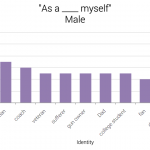2017: The year identity changed everything
Columnist Mike Sands takes a look back at this year’s notable events in digital advertising and examines the underlying theme of identity that’s transforming brands.

This year was a tumultuous one for brands across the board. Newsfeeds were dominated by Amazon, on pace to become the first trillion-dollar company any day now. The Facebook-Google duopoly grew even more powerful, raking in half of global ad revenues this year, and more than 60 percent in the US, according to eMarketer’s digital ad forecast. And the explosive growth of newer, smaller, more innovative companies that have forever transformed consumer behavior put the old guard on high alert.
In other words, identity really shook things up in 2017.
You see, inherent in brand success today is the ability to literally know you — not you as a demographic segment with 10,000 attributes, but you as someone a brand recognizes on a 1:1 basis within its ecosystem. This is how Facebook propelled “people-based” into the marketing mainstream. It’s how “Google” became everyday vernacular for finding answers. It’s how Amazon legitimized “customer obsession” as a business strategy. Moving forward, it’s how brands must evolve to survive.
A look back at 2017’s pivotal moments
Look past the headlines and consider the backstory behind some of this year’s most pivotal events. You’ll see identity is the common thread among them all.
January 29: Procter & Gamble CMO Mark Pritchard calls out ‘crappy’ digital advertising supply chain.
Pritchard’s attack on a “murky at best” media supply chain highlighted the dire consequences of handing over a brand’s first-party data to walled gardens or technology partners to resolve customer identities. Left with fragmented customer views, incomplete measurement and no way to fully own customer relationships, building brand loyalty and high lifetime values becomes a gamble, at best. More than half of Fortune 500 companies saw declining revenues with continued digital spend, equating to over $20 billion of marketing waste, inefficiency and ineffectiveness, Association of National Advertisers’ (ANA) CEO Bob Liodice told attendees at a conference in October.
Essentially, the digital players meant to push brands and consumers closer together are actually pulling them farther apart. Now, brands are realizing that the only way to control their futures is to reclaim control of their customer data. Within the past 12 months, nearly 40 percent of marketers worldwide have stipulated in contracts that they maintain ownership of their data, according to a World Federation of Advertisers survey, and over a third are actively seeking alternatives outside of vendor-controlled identity solutions and closed media environments.
April 6: S&P Global Market Intelligence report reveals retailers are filing for bankruptcy at a record rate.
In the first three months of 2017, 14 retail chains sought Chapter 11 court protection — almost as many as the total number in 2016. Others have closed thousands of locations.
But retail isn’t dying. Sales are up. Consumer confidence is strong. Stores are actually opening. What separates the winners and losers is how brands are making use of their first-party data to identify and relate to customers with 1:1 contextual relevancy.
Consider how digital fashion brand JustFab offers new visitors a brief survey to understand individual style preferences and pull together relevant ensembles. And Foot Locker designed a mobile app for sneakerheads that touts new launches, locations and VIP reservations for limited-edition items, enriching its customer IQ in the process.
June 16: Amazon acquires Whole Foods.
Amazon was a formidable foe already, and the company’s acquisition of the upscale grocer made its identity arsenal even stronger, filling in knowledge gaps with more data about what people shop for and what they actually consume. To stay in the game, brands realized they need to up their customer identity assets or forever be benched.
Most notably, Walmart has been ramping up its identity asset with a number of recent strategic acquisitions, as well as with its Google partnership. Other existing brands are transforming into identity companies by snatching up data-driven startups; this fall, for example, Ace Hardware, the granddaddy of neighborhood chains, entered the identity arena by acquiring a majority stake in e-commerce product discovery platform The Grommet.
October 9: Mall developer Westfield’s co-CEO Steven Lowy urges retailers to share data.
With Credit Suisse predicting a quarter of existing US shopping malls to close their doors within the next five years, Lowy’s message reinforced the urgency in sharing data with relevant partners to increase the value and scale of enterprise data assets and emerge from the shadow of Amazon — a message that extends way beyond retailers.
Think of the opportunities data-sharing opens up for other verticals. Consumer packaged goods (CPG) companies own tremendous amounts of data but can’t tie it back to customers. By sharing data with the store in which its goods are sold, CPGs can link store-scanner data to transactional data, dramatically strengthening customer knowledge for both partners.
Or consider the alliance between a quick-service restaurant and a beverage brand, or any combination of automotive, financial services or insurance brands that all share common audience demographics and interests. Data-sharing allows partners to create larger, more valuable identity assets that get them a lot closer to a lot more customers.
Brands are starting to catch on and cash in; in a recent survey performed by Criteo and Forbes, 71 percent of brands and retailers reported being part of data cooperatives. Of those, 72 percent of respondents cited increased revenues as the top benefit of participation, while 65 percent saw increased profits as the top benefit and 56 percent found the greatest benefit in customer satisfaction.
Today: 2017 is the year identity changed everything.
Yes, I realize this is may be hyperbole. But I truly believe identity has transformed the way we build, manage and grow business forever.
Too often, brands still believe their product is their underlying asset instead of their customer data. But today, companies are competing with a new generation of brands that don’t have product legacy; instead, they are built on a foundation of customer data, enabling them to discover, fulfill and create new desires. This is the essence of identity — and now more than ever, it’s absolutely critical for success.
[Read the full article on MarTech Today.]
Opinions expressed in this article are those of the guest author and not necessarily Marketing Land. Staff authors are listed here.
Marketing Land – Internet Marketing News, Strategies & Tips
(51)














